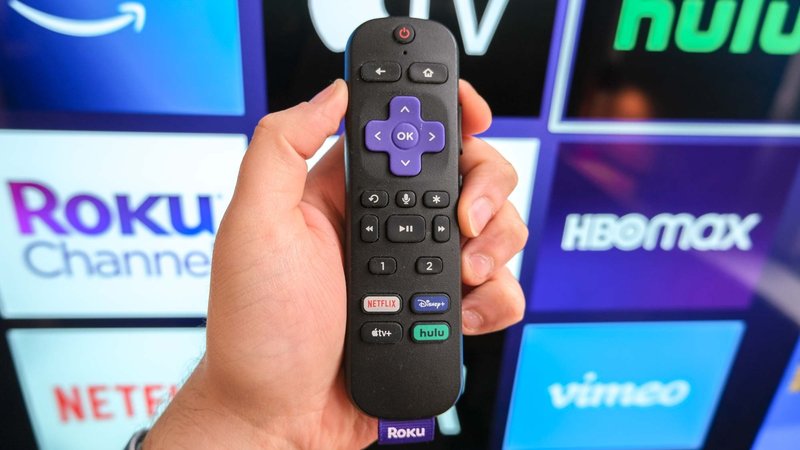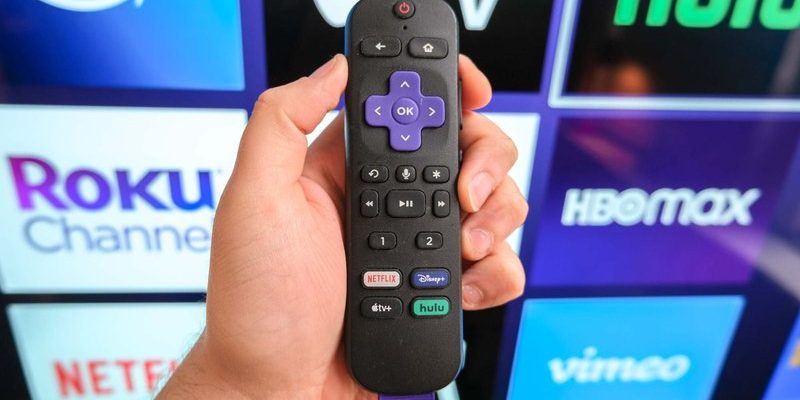
For anyone who has a *Roku*—and let’s be honest, they’ve become as common as coffee mugs—you know that the remote is the unsung hero of your binge-watching routine. There are a few versions out there: the classic infrared remote, the “point-anywhere” enhanced remote, and even rechargeable voice remotes. But no matter which you have, remote issues can crop up and make your relaxing evening feel like a troubleshooting marathon. Don’t worry. Most problems with Roku remotes are super fixable, even if you’ve never so much as changed a TV setting before.
Remote Not Responding (At All!)
Here’s the thing: nothing ruins your Roku experience faster than a remote that just… won’t. You’re pressing buttons like you’re sending Morse code, but your streamer sits there completely unbothered. This is probably the top Roku remote problem people run into and it can feel a little dramatic—like, is my TV haunted?
99% of the time, the culprit is dead or drained batteries. Batteries can look totally fine but secretly be out of juice. So before you panic, grab some fresh AA or AAA’s (whichever your remote uses), pop open the back, and swap them in. Don’t just give the batteries a little jiggle—really change them. Give it a few seconds and see if the *Roku remote* springs back to life.
If that doesn’t solve it, check what kind of remote you have. See, some Roku remotes use infrared (meaning they need a direct line of sight to the device), and others use wireless pairing. If it’s IR, make sure nothing is blocking the path—like your cat or a stack of pizza boxes. For enhanced “point-anywhere” remotes, you might need to *pair* it again. There’s usually a tiny button in the battery compartment for this. Hold it down for a few seconds until you get a flashing light and follow any on-screen instructions.
Remote Keeps Disconnecting or Lagging
Let me guess—you’re trying to pause your show, and the remote is suddenly taking a full five seconds to respond. Or it drops connection altogether for no apparent reason. This kind of lag or dropping out is super annoying, especially if you’re mid-binge and don’t want to lose the plot.
A lot of times, this is down to interference or distance. Enhanced remotes rely on wireless signals, so anything from a thick wall to a bunch of Wi-Fi gadgets can mess with their mojo. Try moving closer to the Roku device and see if it responds faster. If that helps, figure out what’s between the remote and the device, and shift things around if you can.
Roku remotes can also get a little “confused” after a software update or power outage. Here’s a simple fix: unplug your Roku player or stick for about ten seconds, then plug it back in. Once it’s powered up, press and hold the *pairing button* inside the remote’s battery compartment until the *remote* light begins to flash. This lets the remote and Roku reconnect from scratch—think of it as hitting a “refresh” button on their relationship.
Can’t Pair the Remote to the Device
Honestly, rebooting your Roku remote is a bit like teaching your puppy to sit—it takes some patience, but it works with a gentle touch. If you’ve just set up your streaming box or bought a replacement remote, you might hit a snag getting the two to “talk” to each other. No flashy lights, no quick setup, just… crickets.
First, make sure you’re pairing the right way. For enhanced remotes, pop off the back and look for the pairing button (it’s usually easy to spot—tiny, sometimes green). Hold it for about five seconds until you see a blinking light. Your TV should show a pairing message in a few moments. If nothing happens, check the batteries (again, yes, really!), and make sure your Roku device is powered on and connected to the TV.
If the remote still refuses to pair, you might have a tiny code or sync issue. Try restarting both the remote and the streaming device at the same time. Unplug the Roku from power, wait a bit, replug, and then repeat the pairing process once the home screen shows up. If you have another Roku in the house, keep its remote far away for now—sometimes the signals get mixed and one remote tries to pair with the wrong box, which is as frustrating as it sounds.
Buttons Not Working or Sticking
Ever had a button on your Roku remote that just won’t cooperate? Maybe the “OK” button only works if you mash it, or volume changes are a total crapshoot. It’s like your remote is playing favorites with which buttons get to work.
Generally, stuck or unresponsive buttons are caused by dust, crumbs, or even—let’s be honest—spills. Life happens, and remotes see it all. Start by taking out the batteries and gently tapping the remote upside down in your hand. Sometimes, this is enough to shake loose whatever’s stuck inside. If you feel brave and your warranty’s up, carefully pry open the remote’s casing (YouTube is your friend for this) and clean around the buttons with a soft cloth or cotton swab.
If the physical buttons look fine but aren’t *responding*, the issue could be with the remote’s “code”—the little instructions it sends to your streaming device. For enhanced remotes, a quick reset using the pairing button can help. Otherwise, try restarting your Roku device; sometimes it’s the player itself that’s momentarily confused, not the remote.
Lost Remote or Using a Universal Remote
Let me paint a picture: you’re late for movie night, everyone’s on the couch, and—bam—the remote is MIA. It’s either stuck between cushions, inside the fridge (yes, really), or just *gone*. Before you panic, here are a couple of hacks to take the stress down a notch.
If you have a *Roku voice remote pro* or similar, some models feature a “find my remote” option within the Roku menu. Activate it and the remote will emit a beeping sound. If yours doesn’t have this, grab your smartphone and download the free Roku app. It can turn your phone into a virtual remote, complete with navigation and keyboard features (I actually prefer this for searching—it’s way faster).
Now, about using a universal remote: Not all of them work perfectly with Roku devices. Some can only control the TV’s basic functions, not the *streaming stick or box*. If you’re set on using a universal remote, check that it supports Roku codes and read reviews to see if others had luck with your model. Sometimes, getting a replacement Roku remote is just less hassle in the long run.
Batteries Draining Too Fast
You might be wondering why your remote eats through batteries like it’s training for a marathon. It’s actually a sneaky common complaint. Some enhanced or voice remotes are power-hungry—especially if you use the voice search a lot, or if the pairing process is stuck on a loop.
First step: check that the batteries you’re using are fresh, quality ones—not those no-name brands from the bottom drawer. If you notice batteries dying every couple weeks, try resetting or re-pairing the remote just in case it’s sending out non-stop signals. Also, avoid holding down buttons longer than needed.
Some users report the remote’s firmware can cause battery drain. If that’s the case, make sure your Roku device and remote are updated to the latest version. Plug your Roku into the TV, head to *Settings > System > System Update*, and check for updates. If things don’t improve, consider switching to rechargeable batteries or look into a remote with built-in charging—some newer voice remotes have this and it’s honestly a game-changer.
No Power to the Roku Device (Device Not Sensing Remote)
This one’s a bit sneaky: sometimes it’s not your remote that’s the problem, but the Roku streaming device itself. If it’s not getting power or it’s frozen, nothing you do with the remote will matter. You might see a blank screen, or “No Signal” on your TV, or maybe the little Roku light won’t turn on.
Start by checking the power cable and HDMI connection. If your Roku uses a USB port for power from the TV, try plugging it directly into a wall outlet instead—sometimes TV USB ports can’t deliver enough juice. Once you’ve confirmed the device is powered on, try your remote again. If it’s still not working, go through the usual battery, pairing, and reset steps.
If all else fails, sometimes the only fix is a full factory reset. There’s a tiny reset button on most Roku devices—press it down with a paperclip for ten seconds. Be warned, though: this will wipe all your accounts and apps, so use it as a last resort!
Dealing With Remote Code, Sync, or Reset Errors
Every once in awhile, you follow all the steps—new batteries, fresh pairing, you name it—and the remote still won’t “sync” with your Roku. This is where things start to feel a little technical, but don’t worry, it’s not rocket science.
The remote and Roku use secret codes (not the spy kind, but close) to talk to each other, and if something throws off that connection—maybe a glitch during a firmware update or a brief power cut—the fix is simple: do a *hard reset* for both. Take the batteries out of your remote, unplug your Roku, wait 30 seconds, and then power everything back up. As soon as you see the home screen, put the batteries back in the remote and hold the *pairing button* until the remote starts to blink.
If you keep running into code or sync errors, you might have a hardware fault. In that case, reach out to Roku support, or consider getting a replacement remote. I know, not what you wanted to hear, but sometimes tech just calls it quits. At least Roku remotes are easy (and pretty cheap) to replace.
Wrapping Up: Keep Streaming, Keep Smiling
Honestly, Roku remote problems are just part of the streamer’s life—like running out of popcorn or losing Wi-Fi for a minute. But the good news? Almost every issue, from pairing woes to sticky buttons, can be sorted with a calm head, a fresh set of batteries, and a few simple troubleshooting steps. Whether you’re a binge-watcher or just like the occasional movie night, knowing these fixes means less time fiddling and more time enjoying your shows. Here’s to smoother streaming (and maybe keeping that remote somewhere you can actually find it)!
